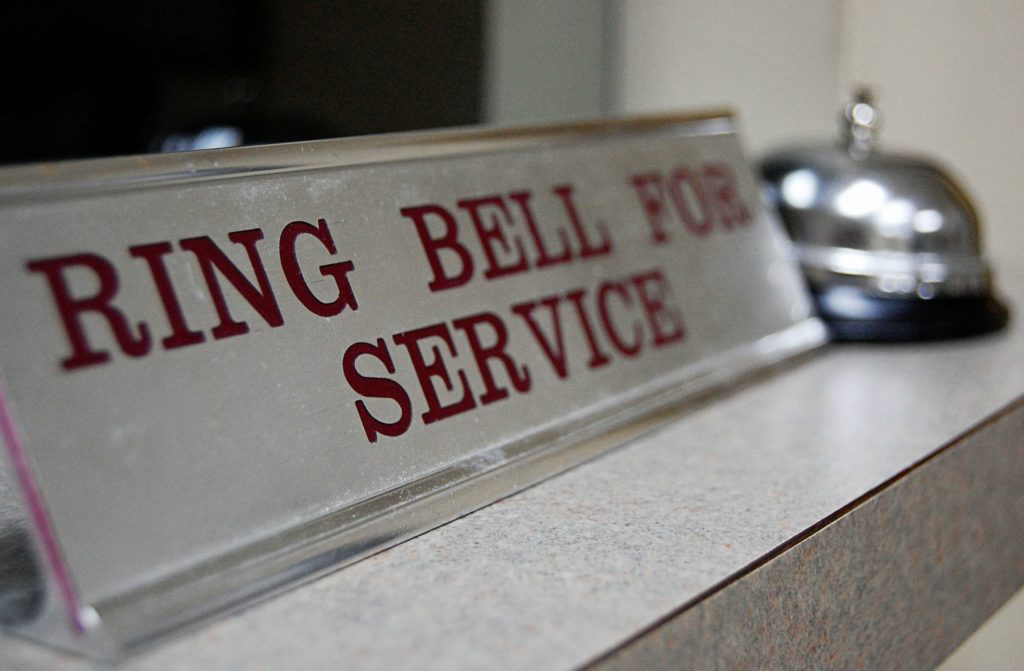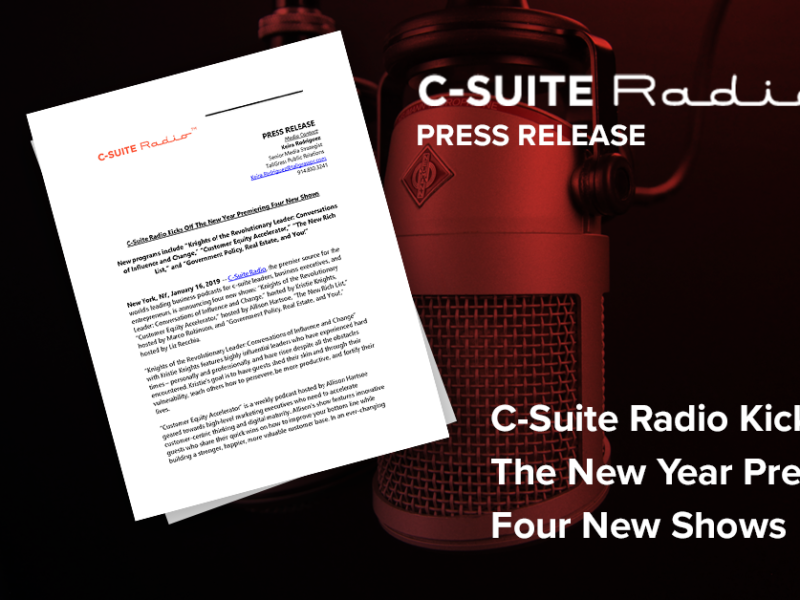
Customer Service – The DISC Styles Way!
Customer Service – The DISC Styles Way! https://csuiteold.c-suitenetwork.com/wp-content/uploads/2015/07/4280708076_6df84144d7_o1-1024x671.jpg 1024 671 C-Suite Network https://csuiteold.c-suitenetwork.com/wp-content/uploads/2015/07/4280708076_6df84144d7_o1-1024x671.jpgby Dr. Tony Alessandra

Everywhere you turn today, you hear about the importance of customer satisfaction. From the bank to the phone company to the video store, every business seems to proclaim “The Customer Is King,” that “People Are Our Business,” that “Your Satisfaction Is Our No.1 Goal.”
So, you might think that service is getting better with each passing moment. Surveys, though, suggest otherwise. In fact, one customer in four is said to be thinking about leaving the average business at any given time because of dissatisfaction.
What’s wrong? One answer is that that too many companies and employees view customer support as something that happens once and then is over. But true service focuses not on a one-time event but on building a sustained, positive relationship.
A second reason for poor service is that we often treat customers and clients as if they’re all pretty much the same. But only by honoring their individuality can we hope to build lasting rapport. Firms and people with a positive attitude toward service know that each contact–even a conflict or a complaint–is an opportunity that may never come again. Such encounters typically fall into three categories:
Moments of Magic: Positive experiences that make customers glad to do business there.
Moments of Misery: Negative experiences that irritate, frustrate, or annoy.
Moments of Mediocrity: Routine, uninspired service that leaves neither a strong positive impression nor a strong negative impression.
Moments of Magic might include a hotel clerk who greets you with a warm smile, uses your name, shakes your hand, and sincerely asks that you call her with any problems. You remember such experiences.
But you probably remember even more clearly Moments of Misery, such as clerks who won’t take responsibility for solving problems–personnel who don’t know what they’re doing-and worse yet, don’t seem to care–or salespeople who first ignore you, then act as if they’re doing you a favor by taking your money. We’ve all had those experiences, but usually not more than once at the same place. Because we don’t go back.
Exceeding Expectations
The key to creating a Moment of Magic is exceeding a customer’s expectations. Sounds simple enough. But because people’s expectations vary according to personality type, what works for one may not work for another.
Handling a complaint is one of the most common, yet difficult, service situations, for customer and employee alike. So we’re going to look at that process and how we can use knowledge of the DISC behavioral styles to create Moments of Magic.
As anyone who’s ever dealt with upset customers can attest, they can be a diverse bunch: some loudly belligerent, some agitated but overloading you with details, others low-key and almost apologetic. But if you respond the same way to the belligerent, the agitated, and the apologetic, you might increase the irritation for some of them. You might even produce a Moment of Misery.
That’s because each style shows different symptoms of stress and reacts in different ways. But if you can recognize and respond to these patterns, you can reduce stress, yours and theirs.
Dealing with High ‘D’ Dominance Styles
As complainants, High D’s can be aggressive and sometimes pushy. And they may become intrusive, perhaps saying something like, “I demand to see the president this instant!” or “If you don’t furnish me every last bit of correspondence in this matter, you’ll hear from my lawyer in the morning.”
High D’s may appear uncooperative, trying to dictate terms and conditions. But ask yourself: what do they need? You can help defuse them by providing:
- Results, or at least tangible signs of progress;
- A fast pace;
- Evidence that they have control of the situation;
- A belief that time is being saved.
The last thing you should do is to assert your authority and argue with the High D’s. They’re not going to be listening, and they’ll probably out-assert you. “Nobody ever won an argument with a customer” is an axiom of service. And that’s doubly true with High D’s.
Dealing with High ‘I’ Influence Styles
High I’s with a complaint may seem overeager and impulsive. “I need this settled right this moment,” they might say, despite your logical explanation of why this complex situation can’t possibly be cleared up for 48 hours. High I’s, usually skilled in verbal attack, may also come across as manipulative, perhaps saying, “I wonder if a letter to your CEO and chairman of the board would improve your attitude?”
Under stress, High I’s’ primary response may be to disregard the facts and anything you say. But you can address their needs by giving them:
- Personal attention;
- Affirmation of their position;
- Lots of verbal give-and-take;
- Assurance that effort is being saved.
You may think the best course is to sit there impassively and let the High I’s harangue you. But, actually, you’d probably be better off to give them a quick-paced, spirited explanation that shows you aren’t just brushing them off.
Dealing with High ‘S’ Steadiness Styles
High S’s are the least likely to be loud and argumentative. When they do come forward, they may appear submissive, hesitant, or even apologetic. Worse yet, they may not even complain openly but just internalize their dissatisfaction and then take their business elsewhere. So if you suspect a problem, you may need to draw them out.
High S’s hate conflict, so they just wish this whole problem would go away, even if it weren’t necessarily settled in their favor. “I’m sorry to make such a big deal out of this,” they often say.
High S’s will be made most comfortable if you:
- Make them feel they’re personally “okay”;
- Promise that the crisis will soon ebb;
- Guarantee that the process will be relaxed and pleasant;
- Show you’re committed to working with them to iron out the problem and save the “relationship.”
You might be tempted to think the diffident RELATER is not to be taken seriously and can be shunted aside with mere lip service. But, remember, they’re just as upset as High D’s are; they just express it in a much more low-key way. And they’ll quietly go elsewhere if their needs aren’t met.
Dealing with High ‘C’ Conscientious Styles
High C’s won’t loudly carp and cajole like High D’s or High I’s, but they won’t be submissive, either. And their complaints may have a sharper edge to them than will the High S’s.
High C’s tend to recite the chronology of events and the litany of errors they’ve had to endure. They’ll provide data and documentation and get quite involved in the details of the snafu.
Here’s how you can lessen tension with complaining High C’s:
- Suggest that they’re right
- Explain the process and details
- Show appreciation for their accuracy and thoroughness
- Help them save face”
You may see them as compulsives more hung up on the process and on showing they’re right than getting the problem resolved. But if you want to retain their loyalty, you’ll deal with them precisely and systematically, emphasizing your firm’s interest in seeing justice done.
An Important Head Start
Knowing and using The Platinum Rule to deal with complaints gives you an important head start toward creating a Moment of Magic. It allows you to collaborate with your customers in solving the problem, reducing the likelihood that they’ll make outrageous demands, become abusive or take their business elsewhere.
In fact, studies show that customers who feel that a business has responded to their complaints are more likely than non-complainers to do business there again. They actually become more loyal than if the problem never happened.
So look at your complaints as opportunities to show much you really care about the customer. Remember: Your customers aren’t just part of your job; your customers are the reason you have a job!
 Dr. Tony Alessandra is the CEO of Assessment Business Center, a company that offers online 360º assessments, and a founding partner in the Platinum Rule Group, a company which has successfully combined cutting-edge technology and proven psychology to give salespeople the ability to build and maintain positive relationships with hundreds of clients and prospects. Tony is also prolific author with 27 books translated into more than 50 foreign language editions. Dr. Alessandra was inducted into the NSA Speakers Hall of Fame in 1985. Follow him on Twitter @TonyAlessandra.
Dr. Tony Alessandra is the CEO of Assessment Business Center, a company that offers online 360º assessments, and a founding partner in the Platinum Rule Group, a company which has successfully combined cutting-edge technology and proven psychology to give salespeople the ability to build and maintain positive relationships with hundreds of clients and prospects. Tony is also prolific author with 27 books translated into more than 50 foreign language editions. Dr. Alessandra was inducted into the NSA Speakers Hall of Fame in 1985. Follow him on Twitter @TonyAlessandra.




